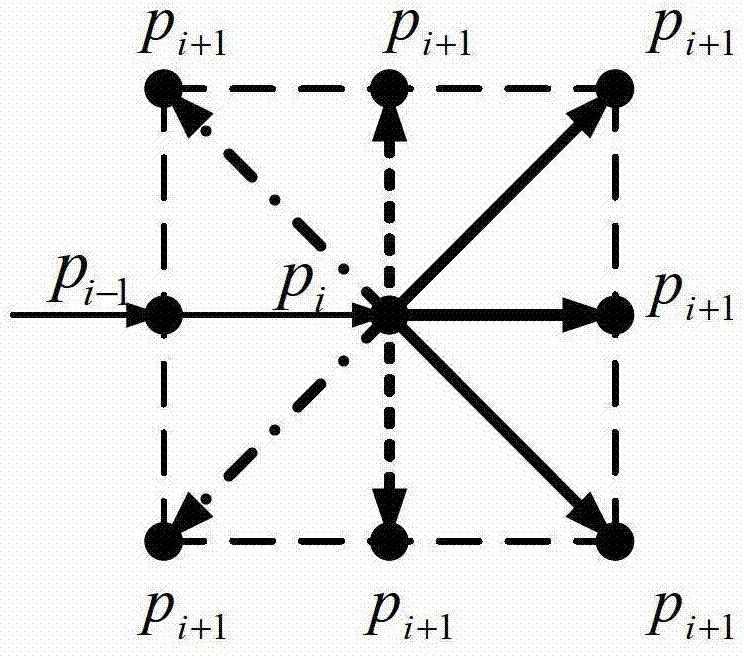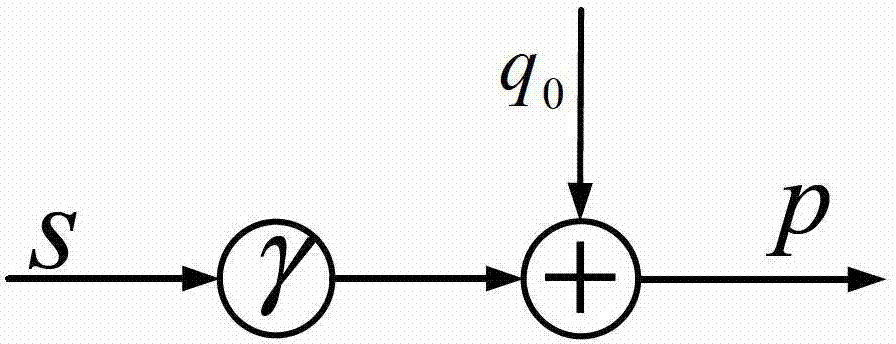Combination machining method for removing high-frequency errors in optical elements
A technology of optical parts and processing methods, applied in metal processing equipment, optical surface grinders, manufacturing tools, etc., can solve the problems of optical parts processing effect to be improved, difficult to effectively control medium and high frequency errors, residual processing characteristics, etc.
- Summary
- Abstract
- Description
- Claims
- Application Information
AI Technical Summary
Problems solved by technology
Method used
Image
Examples
Embodiment 1
[0086] A combined processing method for high-frequency errors in optical parts of the present invention. The processing object of the processing method in this embodiment is a parabolic mirror with a diameter of 200 mm and a vertex radius of curvature of 640 mm. The processing method of this embodiment includes the following steps:
[0087] 1. Evaluation of the machinability of medium and high frequency errors: the operation steps of the evaluation of the machinability of medium and high frequency errors in this embodiment are as follows Figure 4 shown.
[0088] 1.1PSD analysis: firstly carry out PSD analysis on the surface error of the above-mentioned parabolic mirror of the optical part to be processed, and obtain the PSD curve of the surface error (see Figure 6 ), referring to the US QED company’s division standards for optical parts in the low, medium, and high frequency bands, that is, the error space periods are >D / 5, D / 5~D / 30, and -1 ;
[0089] 1.2 Optimization of re...
Embodiment 2
[0100] A combined processing method for high-frequency errors in optical parts of the present invention, the processing object of the processing method in this embodiment is a plane mirror with a diameter of 100mm, and the processing method in this embodiment includes the following steps:
[0101] 1. Evaluation of the machinability of medium and high frequency errors: the operation steps of the evaluation of the machinability of medium and high frequency errors in this embodiment are as follows Figure 4 shown.
[0102] 1.1 PSD analysis: first, PSD analysis is performed on the surface error of the above-mentioned plane mirror of the optical part to be processed, and the distribution of the surface error is obtained as follows: Figure 9 As shown, the obtained PSD curve is as follows Figure 13 As shown, it can be seen that there is a spatial frequency of 0.2mm in the surface shape error -1 The sinusoidal surface error structure; according to the division standard of medium a...
PUM
| Property | Measurement | Unit |
|---|---|---|
| Caliber | aaaaa | aaaaa |
| Length | aaaaa | aaaaa |
| Width | aaaaa | aaaaa |
Abstract
Description
Claims
Application Information
 Login to View More
Login to View More - R&D
- Intellectual Property
- Life Sciences
- Materials
- Tech Scout
- Unparalleled Data Quality
- Higher Quality Content
- 60% Fewer Hallucinations
Browse by: Latest US Patents, China's latest patents, Technical Efficacy Thesaurus, Application Domain, Technology Topic, Popular Technical Reports.
© 2025 PatSnap. All rights reserved.Legal|Privacy policy|Modern Slavery Act Transparency Statement|Sitemap|About US| Contact US: help@patsnap.com



